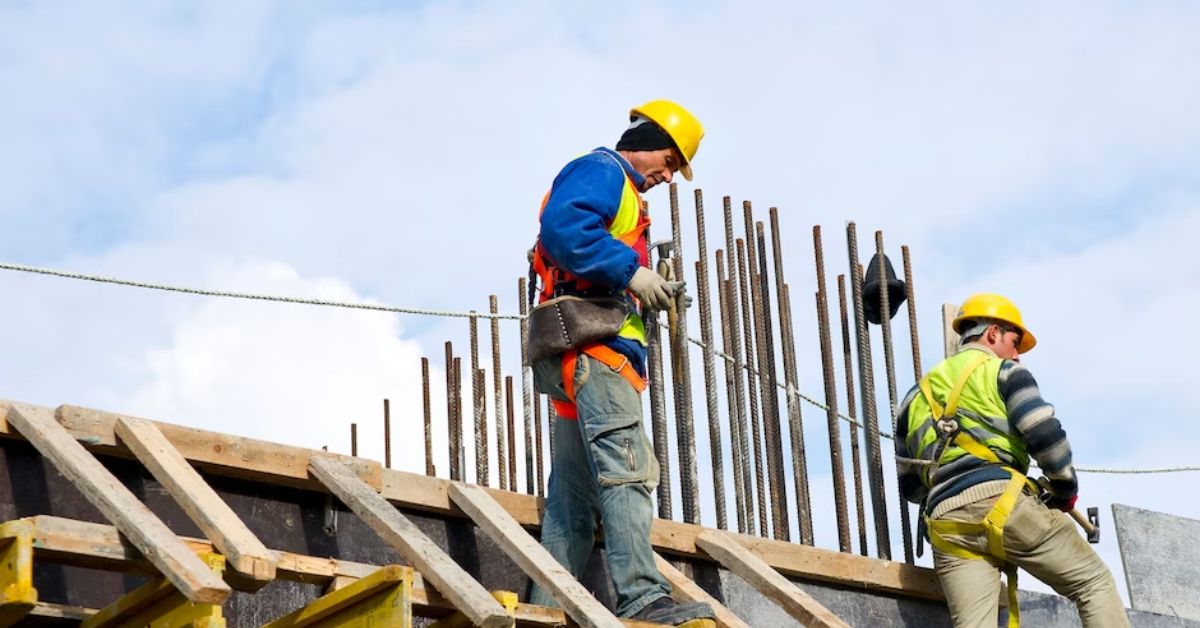Construction sites are inherently dangerous, with numerous hazards that can lead to accidents and injuries. Construction site managers are responsible for safety measures that control these hazards to protect workers, contractors and the public.
This blog discusses construction site safety, why it’s important and how to improve it. It also explores the training programmes that can help managers develop their safety knowledge and skills.
Construction Site Safety Measures
Construction site safety encompasses protocols, practices and policies designed to minimise risks and prevent accidents. Measures include:
- Personal Protective Equipment (PPE): Workers should wear appropriate safety gear such as hard hats, steel-toed boots, high-visibility vests, gloves, and safety goggles to protect themselves from potential hazards.
- Hazard Identification and Assessment: Managers must conduct regular risk assessments to identify potential hazards and prioritise safety measures accordingly.
- Safety Signs and Communication: Clear signage and communication protocols are essential for alerting workers to potential dangers and ensuring everyone understands safety instructions.
- Equipment Inspection and Maintenance: Regular inspection and maintenance of construction equipment and machinery are crucial to prevent breakdowns and accidents.
- Emergency Response Plans: Managers should have comprehensive emergency response plans in place, including evacuation procedures, first aid stations, and communication systems.
Importance of Construction Site Safety
Ensuring safety on construction sites is not just a legal requirement but a moral and ethical obligation. Here are some key reasons why construction site safety is critical:
Health and Safety: The most significant reason for prioritising safety is to prevent injuries and save lives. Construction sites are prone to accidents, and safety measures can significantly reduce risks.
Legal Compliance: Non-compliance with safety regulations can lead to legal repercussions such as fines or even criminal charges for managers and contractors.
Cost Savings: Implementing safety measures can reduce accidents, insurance costs and workers’ compensation claims, ultimately saving money in the long run.
Reputation Management: A commitment to safety enhances a company’s reputation and can lead to more contracts and business opportunities.
Productivity and Efficiency: When workers feel safe, they are more productive and motivated, leading to higher efficiency and quality of work.
Ways to Improve Safety on Construction Sites
To enhance safety on construction sites, managers can take various proactive measures:
- Develop Safety Plans: Develop detailed safety plans that include risk assessments, safety protocols and emergency response procedures.
- Train Employees: Ensure that all workers receive proper training on safety procedures and use of PPE.
- Conduct Regular Inspections: Conduct frequent site inspections to promptly identify and address potential hazards.
- Create a Safety Culture: Foster a safety culture by promoting open communication, responding to near-miss reports and rewarding safe behaviour.
- Maintain Equipment: Implement strict maintenance schedules for machinery and equipment to prevent breakdowns and accidents.
- Collaborate with Authorities: Work closely with independent authorities to stay up-to-date on regulations and best practices.
- Use Safety Technology: Utilise modern technology such as drones, sensors and wearable devices to monitor safety conditions and improve response times.
Consequences of Poor Construction Site Safety
Neglecting construction site safety can have severe consequences, including:
- Injuries and Fatalities: Accidents can result in injuries or even fatalities, causing emotional distress to families and colleagues.
- Legal Consequences: Non-compliance with safety regulations can lead to legal action, fines and imprisonment for managers and contractors.
- Increased Costs: Accidents lead to increased insurance premiums, workers’ compensation claims, medical expenses and project delays, which can significantly impact the bottom line.
- Reputation Damage: A poor safety record can tarnish a company’s reputation, losing trust among clients and potential partners.
- Project Delays: Accidents and injuries can lead to project delays, resulting in financial penalties and loss of business opportunities.
Training Programmes for Construction Site Managers
Managers have a responsibility to ensure the well-being of their team. The following training and awareness programmes help develop safety skills and knowledge:
First Aid at Work Training:
Managers should undergo comprehensive First Aid at Work Training to provide immediate assistance in case of injuries on the site. Training content covers CPR, wound care and other common medical emergencies.
Construction Risk Assessment Training:
Construction Risk Assessment Training explains how to identify hazards and evaluate risks in construction projects. This vital knowledge helps managers determine and implement measures to mitigate these risks and enhance overall safety.
CDM Training (Construction Design and Management):
CDM Training is essential for understanding the legal requirements and responsibilities related to health and safety in construction. It supports compliance with regulations and promotes safe project planning and execution.
Health and Safety in Construction:
This training programme teaches construction workers and managers the fundamental principles of workplace safety. Health and Safety in Construction covers of hazard recognition, accident prevention and emergency response procedures.
IOSH Managing Safely:
IOSH Managing Safely helps managers understand and fulfil their health and safety responsibilities. The course gives managers the knowledge to manage safety on construction sites, including risk assessments, safety planning, and regulatory compliance.
Conclusion
Safety must be a priority on construction sites. Managers can create safer construction sites by implementing robust safety measures, improving site conditions and undergoing relevant training programmes.
You May Also Like: Effective Ways to Remove Odors from Rug



